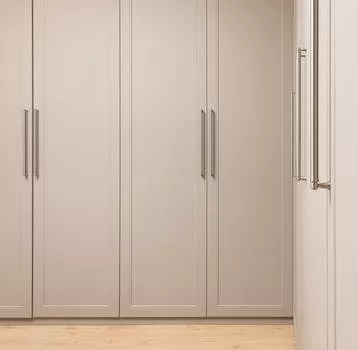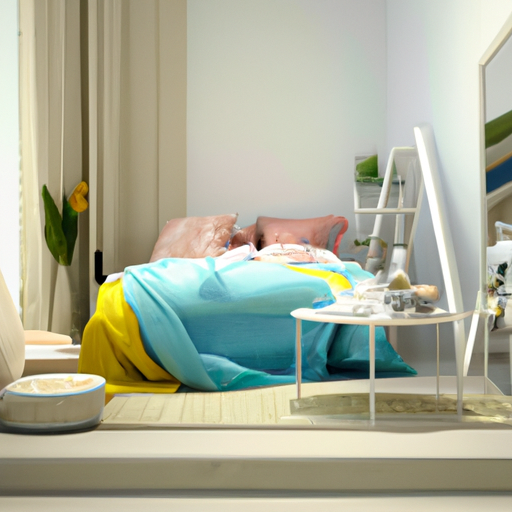Creating Functional and Stylish Spaces for Teens
Designing a home that caters to the unique needs and preferences of teenagers can be a challenging task. As they transition from childhood to adulthood, teenagers require spaces that are both functional and stylish, allowing them to express their individuality while also providing a comfortable environment for studying, socializing, and relaxing. In this article, we will explore some key considerations and tips for creating a home that is perfect for teenagers.
One of the most important aspects of designing a home for teenagers is to create spaces that are versatile and adaptable. As teenagers grow and their interests change, their living spaces should be able to evolve with them. This can be achieved by incorporating modular furniture, such as desks, shelves, and seating, that can be easily rearranged or repurposed as needed. Additionally, consider using neutral colors for walls and larger furniture items, as these can serve as a blank canvas for teenagers to personalize with their choice of accessories, artwork, and other decorative elements.
Another crucial element in designing a home for teenagers is to provide ample storage solutions. Teenagers often have a multitude of belongings, ranging from clothing and shoes to books, electronics, and sports equipment. To keep their living spaces organized and clutter-free, it is essential to incorporate a variety of storage options, such as built-in wardrobes, under-bed storage, and wall-mounted shelves. This not only helps to maintain a tidy and visually appealing environment but also encourages teenagers to take responsibility for their possessions and develop good organizational habits.
In addition to storage, it is important to create designated spaces for various activities that teenagers typically engage in. For instance, a dedicated study area with a comfortable desk, ergonomic chair, and adequate lighting is essential for promoting focus and productivity. This space should be separate from the sleeping area to minimize distractions and establish a clear boundary between work and relaxation. Similarly, providing a cozy nook or seating area for reading, listening to music, or engaging in hobbies can encourage teenagers to pursue their interests and develop their talents.
Socializing is another key aspect of teenage life, and designing a home that facilitates interaction with friends is crucial. This can be achieved by creating inviting communal spaces, such as a living room or outdoor patio, that are equipped with comfortable seating, entertainment options, and ample space for group activities. Additionally, consider incorporating elements that cater to teenagers’ specific interests, such as a gaming console, sports equipment, or a music system, to create a welcoming environment for their friends and foster a sense of belonging.
Finally, it is essential to strike a balance between providing teenagers with privacy and maintaining open lines of communication within the family. Designing a home that offers private spaces for teenagers, such as a separate bedroom or a designated study area, can help them feel more independent and in control of their environment. At the same time, it is important to maintain shared spaces where the family can come together for meals, conversations, and bonding activities. This can help to foster a sense of connection and support, which is crucial for teenagers as they navigate the challenges of adolescence.
In conclusion, designing a home that is perfect for teenagers involves creating functional and stylish spaces that cater to their evolving needs and interests. By incorporating versatile furniture, ample storage solutions, designated activity areas, inviting communal spaces, and a balance between privacy and family connection, you can create a home environment that supports teenagers’ growth and development while also reflecting their unique personalities and preferences.
Designing a Teen-Friendly Home: Tips and Tricks

Designing a home that caters to the needs and preferences of teenagers can be a challenging task. As they transition from childhood to adulthood, teenagers require a living space that not only provides comfort and privacy but also encourages personal growth and development. In this article, we will explore some tips and tricks to help you design a home that is perfect for teenagers, ensuring that their unique needs are met while creating a harmonious living environment for the entire family.
One of the most important aspects of designing a teen-friendly home is providing a sense of privacy and personal space. As teenagers begin to develop their own identities and interests, they often crave a space where they can retreat and express themselves without judgment. To accommodate this need, consider allocating a dedicated room or area for each teenager in the household. This space should be designed with their input, allowing them to choose the color scheme, furniture, and décor that best reflects their personality and preferences. Additionally, ensure that their room is equipped with ample storage solutions to keep their belongings organized and clutter-free.
Another crucial element in designing a home for teenagers is creating spaces that promote social interaction and bonding. Teenagers are at a stage in their lives where friendships and peer relationships play a significant role in their overall well-being. To encourage these connections, consider incorporating communal areas such as a spacious living room, an outdoor patio, or even a dedicated game room where teenagers can comfortably hang out with their friends. These spaces should be furnished with comfortable seating, ample lighting, and entertainment options such as a television, gaming console, or sound system.
In addition to social spaces, it is essential to provide teenagers with areas that support their academic and extracurricular pursuits. A designated study area equipped with a desk, comfortable chair, and proper lighting can help create an environment conducive to focus and productivity. Additionally, consider incorporating storage solutions for books, school supplies, and electronic devices to keep the study area organized and clutter-free. If your teenager is involved in sports or other extracurricular activities, ensure that there is adequate space to store their equipment and gear.
As teenagers become more independent, they may also begin to take on more responsibilities within the household. Designing a home that encourages this sense of responsibility can help foster their growth and development. For example, consider creating a designated laundry area where teenagers can learn to manage their own laundry. Similarly, involving them in the design and organization of shared spaces such as the kitchen can encourage them to take an active role in meal planning and preparation.
Lastly, it is important to strike a balance between creating a teen-friendly home and maintaining a cohesive design aesthetic that appeals to the entire family. To achieve this, consider incorporating versatile furniture and décor that can easily be updated or replaced as your teenager’s tastes and preferences evolve. Additionally, opt for durable materials and finishes that can withstand the wear and tear of daily use by active teenagers.
In conclusion, designing a home that is perfect for teenagers involves a careful consideration of their unique needs and preferences. By providing them with private spaces for self-expression, communal areas for social interaction, and designated areas for academic and extracurricular pursuits, you can create a living environment that supports their growth and development. Furthermore, involving teenagers in the design process and encouraging their sense of responsibility within the household can help foster their independence and maturity. With these tips and tricks in mind, you can create a harmonious and functional home that caters to the needs of both teenagers and the entire family.
Balancing Privacy and Supervision in a Teen-Centric Home
Designing a home that caters to the unique needs of teenagers can be a challenging task for parents. As teenagers grow and develop, they require a delicate balance of privacy and supervision to ensure their safety and well-being. This article will explore various strategies for creating a teen-centric home that fosters independence while maintaining a strong sense of family connection.
One of the most important aspects of designing a home for teenagers is providing them with a sense of privacy. As they mature, teenagers often crave personal space where they can retreat and relax without feeling constantly monitored by their parents. This can be achieved by allocating a separate living area or bedroom for your teenager, ideally located in a quieter part of the house. If space is limited, consider using room dividers or curtains to create a sense of separation within a shared space. Additionally, providing your teenager with their own desk or workspace can give them a dedicated area to focus on their studies and hobbies.
While it’s essential to respect your teenager’s need for privacy, it’s equally important to maintain a level of supervision to ensure their safety and well-being. One way to achieve this balance is by incorporating open-plan living spaces into your home design. Open-plan living areas encourage family interaction and make it easier for parents to keep an eye on their teenagers without being overly intrusive. For example, positioning the kitchen and living room in close proximity allows parents to monitor their teenager’s activities while still giving them the freedom to socialize with friends or engage in independent pursuits.
Another key consideration when designing a home for teenagers is creating spaces that encourage social interaction. Teenagers often enjoy spending time with their friends, so it’s important to provide areas where they can comfortably hang out and entertain guests. This could include a dedicated games room, an outdoor patio, or a cozy living area with comfortable seating and entertainment options such as a television or gaming console. By providing inviting spaces for your teenager to socialize, you can help foster a sense of belonging and encourage positive peer relationships.
In addition to social spaces, it’s also important to consider the practical needs of your teenager when designing your home. This may include providing ample storage for their belongings, such as clothing, sports equipment, and school supplies. Customizable storage solutions, such as built-in wardrobes or modular shelving systems, can help keep your teenager’s room organized and clutter-free. Additionally, ensuring that your home has a strong Wi-Fi connection and multiple charging points for electronic devices can help support your teenager’s academic and social needs.
Finally, when designing a home for teenagers, it’s essential to involve them in the decision-making process. Encouraging your teenager to participate in the design and decoration of their living spaces can help them feel a sense of ownership and responsibility for their environment. This can also provide an opportunity for parents and teenagers to bond and collaborate on a project that reflects their individual tastes and preferences.
In conclusion, designing a home that’s perfect for teenagers requires a careful balance of privacy and supervision, as well as consideration for their social and practical needs. By involving your teenager in the design process and creating spaces that cater to their unique requirements, you can help foster a sense of independence and belonging that will support their growth and development during this critical stage of life.
Q&A
Question 1: What are the essential elements to consider when designing a home that’s perfect for teenagers?
Answer 1: The essential elements to consider when designing a home for teenagers include providing private and personal spaces, creating functional study areas, incorporating ample storage solutions, ensuring proper lighting, and designing comfortable and versatile common areas for socializing and relaxation.
Question 2: How can I create a functional and comfortable study area for teenagers in a home?
Answer 2: To create a functional and comfortable study area for teenagers, ensure the space has a sturdy desk with ample workspace, ergonomic seating, proper lighting, access to power outlets for electronic devices, and storage solutions for books and supplies. Additionally, consider placing the study area in a quiet and distraction-free zone of the home.
Question 3: What are some design tips for creating a versatile and inviting common area for teenagers?
Answer 3: To create a versatile and inviting common area for teenagers, consider incorporating flexible seating options such as bean bags, floor cushions, or modular furniture. Provide entertainment options like a TV, gaming console, or board games. Use durable and easy-to-clean materials for furnishings, and incorporate teenagers’ interests and hobbies into the decor to make the space feel personalized and welcoming.
Conclusion
In conclusion, designing a home that’s perfect for teenagers involves creating a functional, comfortable, and personalized space that caters to their needs and preferences. This includes providing private areas for relaxation and study, incorporating ample storage solutions, ensuring safety and accessibility, and fostering social interaction through communal spaces. Additionally, incorporating their interests and allowing them to participate in the design process will result in a home that truly reflects their personality and supports their growth and development.


